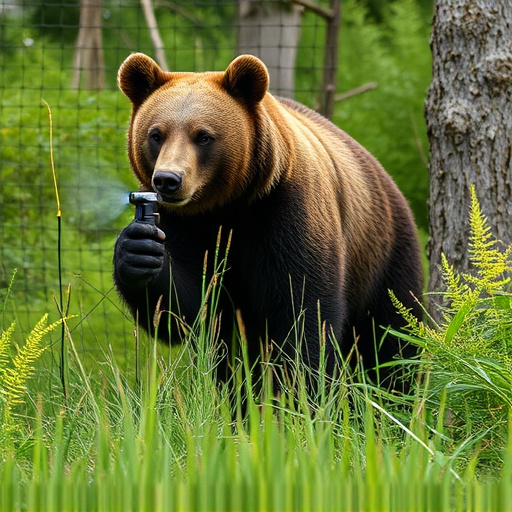Understanding bear behavior and adhering to safety guidelines are crucial for hiking in bear country. Proper storage of bear spray, including maintaining the proper temperature for bear spray storage (below 120°F/49°C), is key to deterring bears and ensuring effectiveness. Store spray indoors, away from direct sunlight and heat sources, between 40-100°F (4-38°C) for maximum protection.
Hiking in bear country requires more than just sturdy boots and a map. Understanding local bear behavior and packing the right safety equipment can mean the difference between a thrilling adventure and a potentially dangerous encounter. This article delves into crucial aspects of bear country hiking safety, focusing on bear spray as a critical tool. We explore how to choose effective bear spray, understand its active ingredients, and ensure proper storage at the ideal proper temperature for maximum protection.
- Understanding Bear Behavior in Hiking Trails
- Choosing Bear Spray: Active Ingredients & Effectiveness
- Secure Storage: Ideal Temperatures for Bear Spray Safety
Understanding Bear Behavior in Hiking Trails
Understanding bear behavior is paramount for hikers navigating trails in bear country. Bears, especially grizzly bears, are powerful and unpredictable animals with strong protective instincts, particularly when it comes to their cubs or food sources. In most cases, bears prefer to avoid human contact, but encounters can occur, often due to a hiker’s lack of awareness or improper food storage.
When hiking in bear country, it’s crucial to store food and scented items properly. Bear spray is a common deterrent, but its effectiveness depends on the proper temperature for storage. Typically, it should be kept below 120°F (49°C) to ensure optimal performance. By understanding bear behavior and following recommended safety guidelines, hikers can minimize risks and enjoy their outdoor adventures in these breathtaking landscapes.
Choosing Bear Spray: Active Ingredients & Effectiveness
When considering bear spray as part of your hiking safety gear, understanding the active ingredients and their effectiveness against bears is crucial. Look for products containing capsaicin, a compound derived from chili peppers, which irritates a bear’s eyes, nose, and respiratory system, deterring it from approaching further. Oleoresin capsicum (OC) is another common ingredient, known for its high concentration of capsaicin, making it highly effective in bear country.
Proper storage temperature is an essential factor for ensuring the spray’s effectiveness. Most bear sprays are designed to remain potent between -20°F and 120°F (-29°C to 49°C). Storage outside this range may compromise their active ingredients, so it’s vital to check with the manufacturer for specific guidelines on storing your bear spray safely and effectively.
Secure Storage: Ideal Temperatures for Bear Spray Safety
Proper storage of bear spray is crucial for its effectiveness and safety while hiking in bear country. It’s recommended to store bear spray in a cool, dry place with ideal temperatures between 40°F and 100°F (4°C to 38°C). Extreme heat or cold can degrade the spray’s contents, reducing its potency and potentially rendering it useless when needed most.
Remember that bear spray is not designed to be stored outdoors, as wildlife or extreme weather conditions could compromise its integrity. A secure indoor location, away from direct sunlight and sources of heat, is ideal. Keeping bear spray in its original packaging with the seal intact ensures maximum protection until you need it during a hike in bear-inhabited areas.
When hiking in bear country, prioritizing safety with the right equipment is paramount. Understanding bear behavior, selecting effective bear spray, and ensuring proper storage temperatures are key components of your protection strategy. By arming yourself with knowledge and the right tools, you can confidently navigate these trails, appreciating the natural landscape while minimizing potential risks from wild bears. Remember, staying safe in bear country is a shared responsibility, and every hiker plays a vital role in coexisting harmoniously with these majestic creatures.
